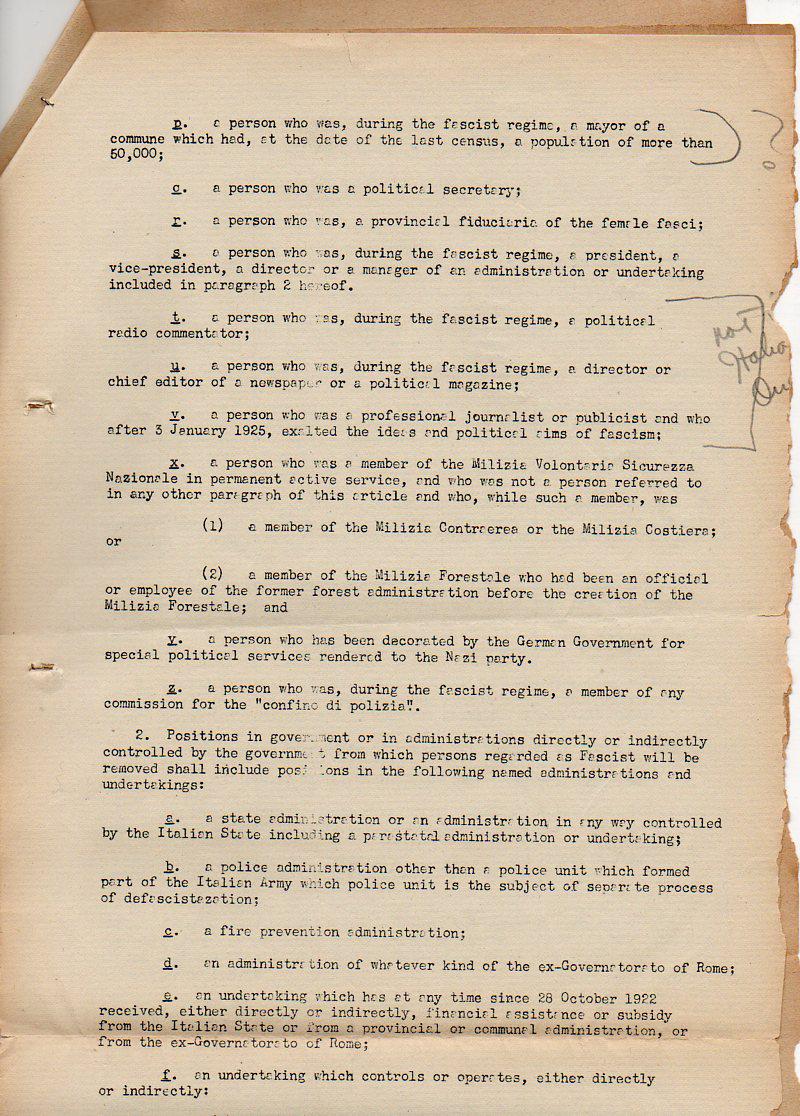The Vault is Slate’s history blog. Like us on Facebook, follow us on Twitter @slatevault, and find us on Tumblr. Find out more about what this space is all about here.
In June 1944, American soldiers of the 5th Army entered Rome. This memo from the headquarters of the Allied Control Commission, which was intended to help define which Italians should be considered “fascists,” went out at the end of that month.
The ACC—later simply the “Allied Commission”—was a military administrative body installed to lend stability to a region suddenly devoid of government. Its goals were to make sure people were fed, and were relatively safe from violence and diseases that could find purchase among a vulnerable population. Part of the ACC’s mission was to keep people who had been involved with the previous government out of positions of power in the new order—hence, the need for such a list.
Historian Victoria Belco, writing a history of the postwar period in central Italy, argues that while the ACC was able to instill a sense of order, it did so while controlling many aspects of Italian daily life. In Tuscany, she found, meetings and assemblies were prohibited; the ownership of carrier pigeons and wireless radios was disallowed; citizens couldn’t sing or play the Italian national anthem or other music.
“By its pervasive and oppressive regulatory nature,” Belco writes, “ACC government did succeed in preventing unrest at the same time it postponed the internal reconstruction of society. It also contributed to a widespread sense of continued victimhood at Allied hands.”
I first saw this memo on John Ptak’s History of Ideas blog. Thanks to John for allowing me to reproduce these images.

Courtesy John Ptak.

Courtesy John Ptak.

Courtesy John Ptak.